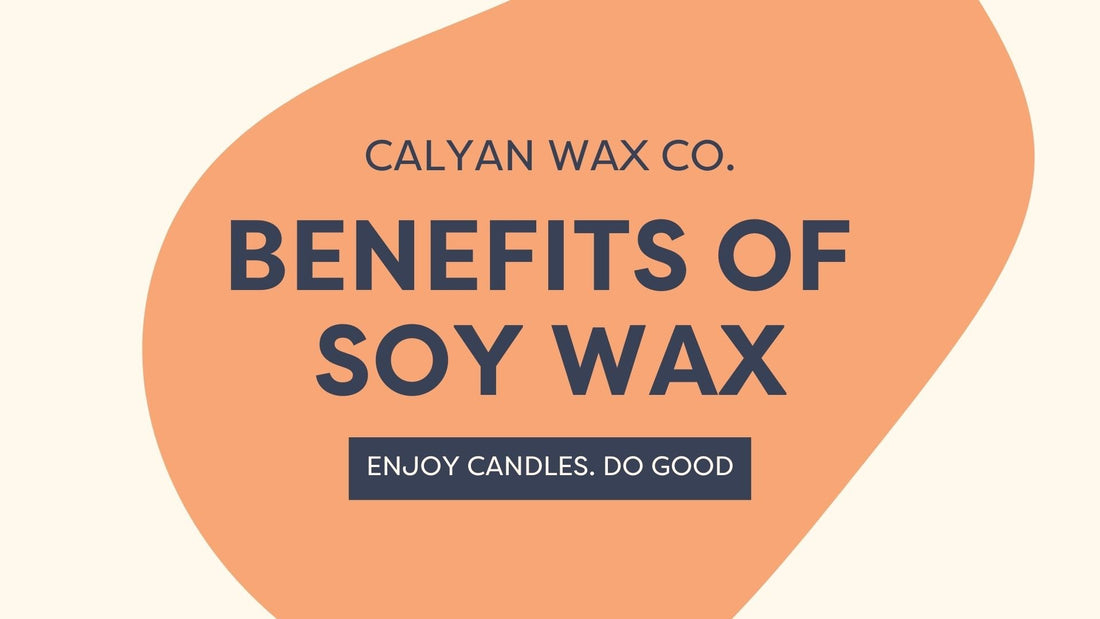

Today, we’re going to talk about one of our favorite things here at Calyan Wax Co.: wax! We have used soy wax to make our candles since we first started, when soy wax was one of the few vegetable waxes available on the market. Soy wax is a renewable resource that burns cleanly and is biodegradable, making it an eco-friendly choice for our candles. In this post, we’ll dive into some common myths and facts about soy wax, as well as discuss some of the other wax alternatives available.
How is Soy Wax Made?
So, what is soy wax and how is it made?
Soy wax is made through the process of hydrogenation. First, soybeans are harvested, cleaned, and rolled into flakes. Then, oil is extracted from the soybeans and hydrogenated, which changes the melt point of the oil, making it solid at room temperature.
Leftover bean husks are used for animal feed. We use 100% soy wax in our candles - we do not blend it with other waxes.
Other candle manufacturers can call a candle a “soy candle” if it has any bit of soy wax in it, so if you're looking for a vegetable wax candle, be sure to ask what the blend is.
Why is Soy Wax Considered "Clean-Burning"?
Soy wax is considered a clean-burning, renewable resource that is biodegradable. Soy wax burns cleanly, and you don’t see much soot coming off our candles. Soy wax candles are known to give off less soot than candles that are made with paraffin. Learn more about this here.
Make sure you keep you wick trimmed to reduce as much soot as possible in your home!

Is Soy Wax Carbon Neutral?
Soy is indeed a renewable resource, and the only limit to the amount of soy wax would be the amount we could grow.
Soy wax is more carbon-neutral than paraffin wax because when a plant grows, it takes in carbon from the air. When you burn a candle, you’re releasing carbon into the air, which evens out. However, this doesn't factor in transportation or the process of transforming the plant into wax, so it’s sort of a half-truth that soy is carbon-neutral.
Where is Soy Wax Grown?
The soy wax we use is grown domestically in the US. Because we use hundreds of pounds of wax in any given week, using a domestic partner for our wax keeps our carbon footprint down, as we don't have to truck it across an ocean to import it.

Is Soy Wax Irritating or Toxic?
One of the things we like most about using soy is that it’s great for creating non-irritating candles.
Our soy wax is non-irritating and non-toxic, and we add a blend of premium natural and man-made fragrances at a dose that is soothing, not overwhelming.
We provide subtle, everyday fragrance that doesn’t irritate your senses, which sets us apart from other brands.
What are the Drawbacks to Making Candles with Soy Wax?
As with other waxes, there are certainly drawbacks to using soy.
In candor, no wax is perfect, and we choose to use soy because it’s the best option available to us. We are always interested in new waxes and want to stay up to date on improvements in the market.
Drawbacks of working with soy include the presence of GMOs in the soy crops, which can be a concern for some consumers.
We're Proud to Use Soy Wax!
In conclusion, soy wax is an eco-friendly choice for our candles, and we’re proud to use it. It’s a renewable resource that burns cleanly and is biodegradable, making it a great option for those looking to reduce their carbon footprint.
At Calyan Wax Co., we’re committed to creating high-quality candles that are both good for you and the environment.



